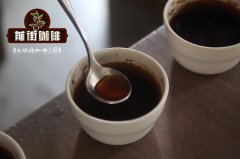The exquisite flavor and taste of Colombian Narinoa coffee? How to grade coffee beans with Lombara

Professional coffee knowledge exchange more coffee bean information please follow the coffee workshop (Wechat official account cafe_style)
The exquisite flavor and taste of Colombian Narinoa coffee? How are Colombian coffee beans graded? How is Na Linglong's coffee growing environment?
Narino province of Columbia is located in the southwest of the country, facing the Pacific Ocean to the west and Ecuador (Ecuador) to the south. The Andes Mountains run through the province. Coffee is grown on a high-altitude cloud belt of 1600 Murray 2300. The soil is fertile volcanic geology, the bean shape is small but full and the color is green. Most of the annual output of Nalinglong is purchased by large American soybean merchants. Narino province is located in the southwest of Colombia, bordering by the Pacific Ocean to the west and neighboring Ecuador (Ecuador) to the south, the Andes Mountains run through the province, where there are magnificent mountains and beautiful scenery, and there are many rivers flowing south through this area, belonging to Colombia's alpine coffee growing area, which has given birth to many small farmers of fine coffee. The total annual output of that Linglong province is about 150000 bags, while the part belonging to fine beans is only about 6000 bags.
Colombian coffee beans are considered to be neatly processed, so both commercial beans and fine Colombian coffee beans are characterized by a clean cup trait, the so-called (Clean Cup), which represents a turbid, defective flavor free from handling defects. But to find a really high-quality Colombian bean, we must focus on "aroma" and "flavor complexity". A prerequisite for boutique Colombia is to list the names of producing areas and estates in detail. The trend of its flavor is more lively and interesting, with fresh aromas of ripe fruit and caramel, the combination of acidity and sweetness is more coordinated, and sometimes the sour taste of plum and white wine can be detected. In the baking depth of Full City, it is possible to taste the aftertaste of milk chocolate, which is a little more mellow.
The Nalinglong producing area is located on the west bank of Colombia, which is the highest elevation in the country. Limited by the topographical environment, the scale of local coffee farmers is very small, picking ripe coffee cherries by hand. The selected batch of small farmers are close to the town of La Union, and as the producing area is not far from the El Galeras volcano, volcanic geology provides rich soil nutrients, making Nalinglong a first-and second-class producer of high-quality coffee in Colombia. Across the northern and southern hemispheres of Colombia, most of the harvest period is twice a year, but Nalinglong, which is located in the south, has only one harvest a year in spring and summer, and the overall yield is significantly lower than that of Huila, which is also a well-known producing area in the south. Small farmers deal with Figue during the non-coffee season.
Taminango is located in the valley of Narino province, 1800m above sea level, and each farmer has no more than three hectares of coffee plantation. Therefore, coffee cultivation in this area is a very traditional way to grow coffee, especially the use of full sun-drying to deal with coffee beans. Taminango coffee trees are planted with banana trees and flowing streams (Shaded), and because they are grown with these fruit trees, no special chemical fertilizers are needed. Because of this, his output is only 500 packs per month (during the production season).
The two main varieties of Colombian coffee are Kaddura and Colombian. Kaddura currently accounts for 45-50% of Colombian production; the Colombian species is a new breed developed in Colombia in the 1980s and has the pedigree of Kaddura and Timo. At present, the coffee variety ratio in Colombia is roughly 50% in Kaddura, 30% in Colombia and 20% in Tibica.
Colombia's FNC (National Organization of Coffee producers) places Specialty Coffee in a more stringent position than national standards. Specialty Coffee is divided into: 1. Origin 2. PREPARETION; three classifications of 3.SUSTAINABLE.
ORIGIN is subdivided into the following three categories.
1. ESTATE: a single farm with an annual output of more than 500bags. (rare in quantity)
2. EXOTIC: it has very precious features. (Labateca region, which belongs to the EXOTIC level)
3. Specific producing areas of REGIONAL:Narino, Huila, etc.
Qianjie recommended cooking:
Filter cup: Hario V60
Water temperature: 90 degrees
Degree of grinding: small Fuji 3.5
Cooking methods: the ratio of water to powder is 1:15, 15g powder, the first injection of 25g water, 25 s steaming, the second injection to 120g water cut off, waiting for the powder bed water to half and then water injection, slow water injection until 225g water, extraction time about 2:00
Analysis: using three-stage brewing to clarify the flavor of the front, middle and back of the coffee. Because the V60 has many ribs and the drainage speed is fast, it can prolong the extraction time when the water is cut off.
Important Notice :
前街咖啡 FrontStreet Coffee has moved to new addredd:
FrontStreet Coffee Address: 315,Donghua East Road,GuangZhou
Tel:020 38364473
- Prev

Salvadoran Coffee Manor Las Ninfa Fairy Manor introduces _ how to bake Salvadoran coffee beans
Professional coffee knowledge exchange more coffee bean information please follow the coffee workshop (Wechat official account cafe_style) CJ1134 Salvadoran Coffee Manor introduction-Fairy Manor Sun treatment Pacamara GrainPro bag Packaging 1 | introduction by Chris Kornman Ricardo Valdivieso is the fourth generation of the family, the family has been growing and processing Pala locally.
- Next

Introduction of Montorion Manor in Santa Ana Coffee producing area of El Salvador
Professional coffee knowledge exchange more coffee bean information Please follow the coffee workshop (Wechat official account cafe_style) I believe many people have never heard of Salvadoran coffee, it is coffee from El Salvador, a small country in South America. Compared with other kinds of coffee. The coffee here is light, fragrant, pure and slightly sour, and its flavor is characterized by excellent balance. It is a specialty of Central America. With acid
Related
- Detailed explanation of Jadeite planting Land in Panamanian Jadeite Manor introduction to the grading system of Jadeite competitive bidding, Red bid, Green bid and Rose Summer
- Story of Coffee planting in Brenka region of Costa Rica Stonehenge Manor anaerobic heavy honey treatment of flavor mouth
- What's on the barrel of Blue Mountain Coffee beans?
- Can American coffee also pull flowers? How to use hot American style to pull out a good-looking pattern?
- Can you make a cold extract with coffee beans? What is the right proportion for cold-extracted coffee formula?
- Indonesian PWN Gold Mandrine Coffee Origin Features Flavor How to Chong? Mandolin coffee is American.
- A brief introduction to the flavor characteristics of Brazilian yellow bourbon coffee beans
- What is the effect of different water quality on the flavor of cold-extracted coffee? What kind of water is best for brewing coffee?
- Why do you think of Rose Summer whenever you mention Panamanian coffee?
- Introduction to the characteristics of authentic blue mountain coffee bean producing areas? What is the CIB Coffee Authority in Jamaica?

